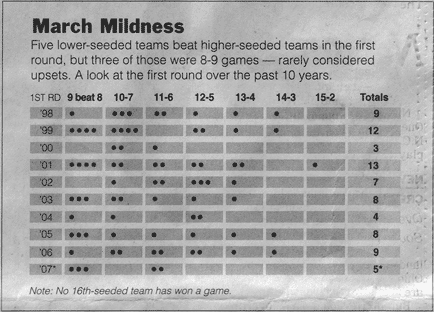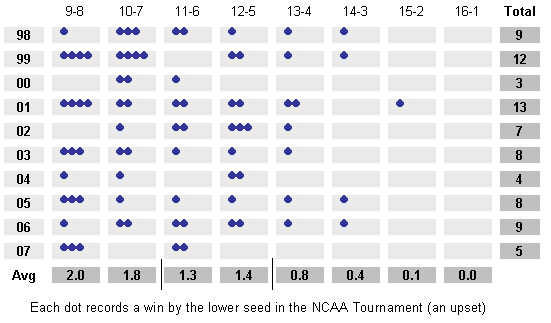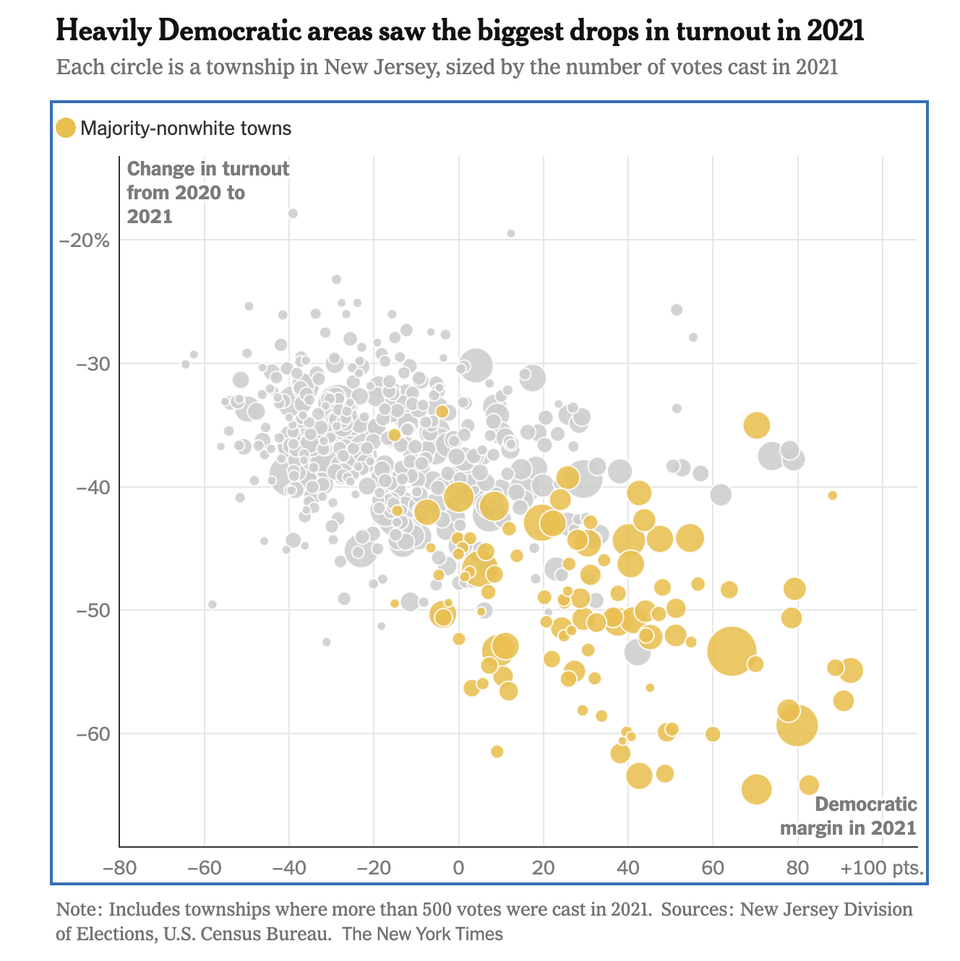March mildness

The Times published this great graphic to show 2007 was an upset-starved year in the recent history of the NCAA Basketball tournament, which is on-going.

Each box contains the number of upsets in a given year of a given pairing, e.g. in 1998, there was one case of a 9-seed beating an 8-seed. An upset is defined as a lower seed beating a higher seed although the editorial comment argued that 9 beating 8 is "rarely considered an upset".
The rightmost column (which sums across a row) tells us that the number of upsets fluctuates wildly between the years, ranging from 3 to 13. (That's why people bet on NCAA pools.)
A couple of improvements will make this chart even more effective:
- Include a row showing the average number of upsets for each pairing;
- Include a column of zeroes for 16-1 pairings.
This second point cannot be emphasized more. The fact that no 1-seed has ever lost to a 16-seed should not be relegated to a footnote. Think of it this way: if the results for 15-2 and 16-1 were reversed so that no 15-seed had ever beaten a 2-seed but one 1-seed had lost to a 16-seed, nobody would omit the 15-2 column!
In his seminal work, The Visual Display of Quantitative Information, Tufte discussed the Challenger disaster at considerable length. A key learning was that non-events (things not happening) contain important information, and should never be dropped from an analysis without unassailable logic.
The mildly improved chart would look like this.

What then to make of the comment that "9 beating 8 is rarely an upset"? For one thing, 9-8 upsets happen about as frequently as 10-7 upsets so if the comment refers to the surprise factor, then even 10-7 upsets should be excluded.
But the comment also underlines a deeper issue, which is hindsight. Obviously, the seeding committee felt, and predicted, that the 8 seed would beat the 9 seed. It was only after the fact that we found out 9 had beaten 8. Instead of denying the 9-8 upset, would it make more sense to ask if there was a seeding error?
Reference: "March Mildness", New York Times, March 17, 2007, p.D2.



